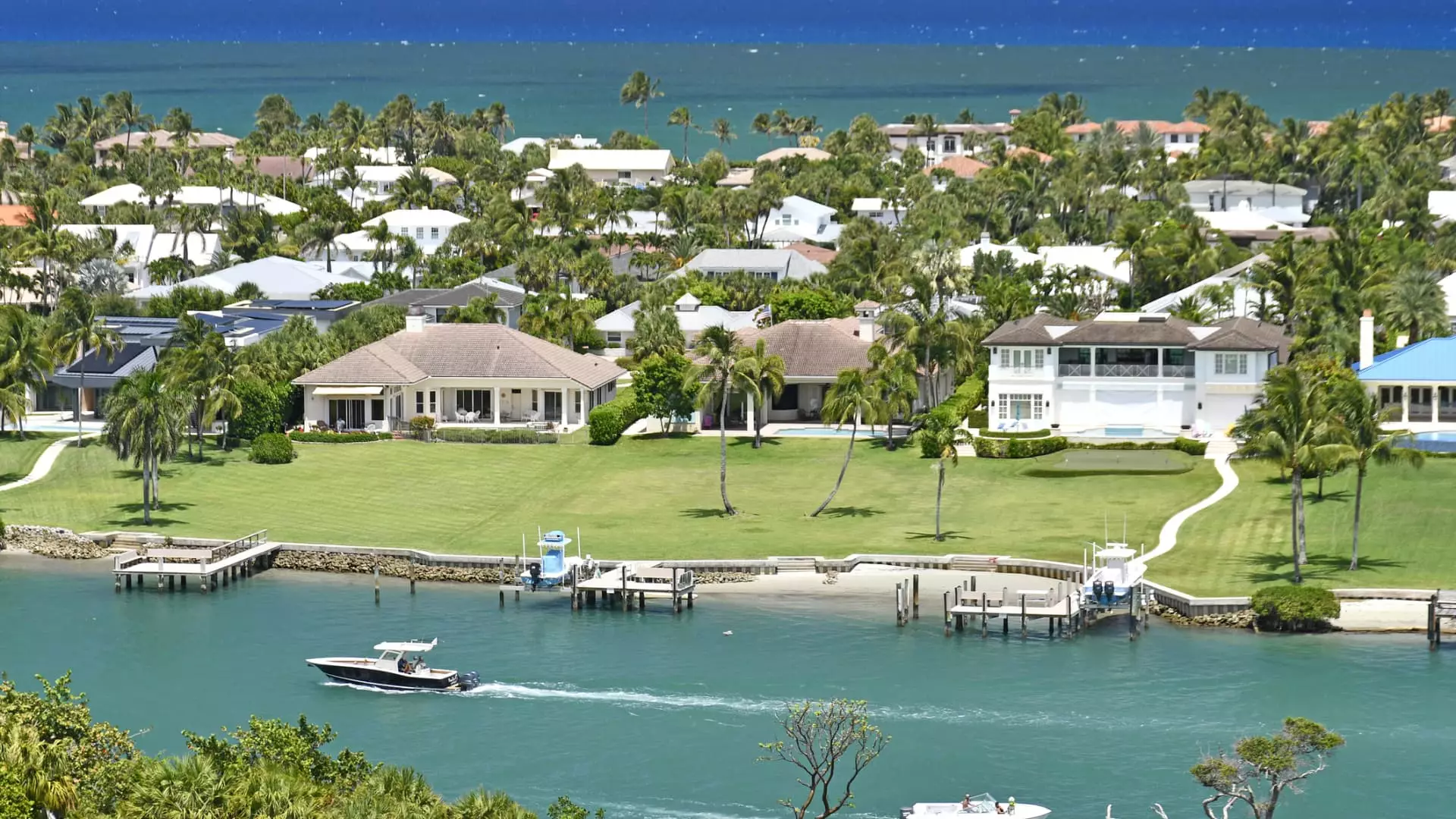The luxury real estate market in 2025 reveals a glaring and uncomfortable truth: wealth is not equal— and neither is confidence. While the ultra-rich, those boasting net worths north of $30 million, continue to splash cash unabashedly on high-end homes, the broader affluent demographic is exercising a cautious restraint. This divergence isn’t just a minor market blip; it illustrates the deepening fissures in economic behavior amid persistent uncertainty. The ultra-wealthy’s preference for all-cash purchases is more than a luxury—it’s a tactical shield against rising interest rates and market tremors. Conversely, the merely wealthy are grappling with the costs of credit and dipping their toes gingerly into luxury real estate waters.
Interest Rates: The Invisible Wall
One key driver splitting these two groups is the soaring cost of borrowing. In a high-interest-rate environment, financing large real estate deals becomes a more onerous burden. For ultra-rich buyers, however, cash is king. It offers immediate leverage, transactional speed, and security—advantages that traditional buyers, even well-off ones, often lack. It’s a crucial competitive edge; why shoulder the cost of interest payments when you can pay upfront? The reluctance of the affluent-but-not-ultra-rich to engage financially under these conditions isn’t irrational but rather a measured, prudent response to avoid overleveraging in uncertain times.
The Illusion of Stability in Luxury Markets
Despite headlines touting overall luxury home sales increases in early 2025, a closer examination exposes underlying fragility. Sales dipped noticeably following recent stock market slumps, with luxury single-family home sales falling nearly 5% year-over-year and attached properties tumbling over 20%. And that drop isn’t mere market noise—it’s a symptom of sharply shifting buyer mentality. Even the traditionally bullish luxury segment isn’t immune to economic jitteriness. Sellers are feeling the pinch too, responding by lowering listing prices to attract a more discerning clientele, signaling that the apparent strength in luxury real estate is not as robust as it seems on paper.
Luxury Buyers: Demanding and Discerning
Another underappreciated market reality is that luxury buyers—especially first-timers—are no longer satisfied with basic opulence; they demand top-tier, sophisticated amenities. From built-in smart refrigerators to spa-like bathrooms, pools, and seamless indoor-outdoor living spaces, buyers are increasingly selective and exacting. This trend reflects a broader shift in consumer values within high society—not just the desire for status symbols but for comfort, convenience, and technological integration. Sellers ignoring these elevated expectations risk alienating their most coveted buyers.
Real Estate as a Hedge or a Risk?
The narrative floating around that luxury real estate functions as an unassailable fortress against inflation and market chaos deserves careful scrutiny. While it’s true that property—especially prime real estate—can be a tangible store of wealth, it is not immune to economic cycles or market fluctuations. The cyclical nature of real estate means no asset class is risk-free, and naively assuming luxury homes are perpetually safe distorts the reality many wealthy buyers now face. The ultra-wealthy’s continued activity can give an impression of market invincibility, but this masks the heightened caution and sporadic hesitance of other investors who may not wield the same financial muscle.
Why This Matters Beyond the Mansions
The stark divide in buying power and attitudes within the luxury real estate market reflects wider social and economic trends. In an era where economic uncertainty looms large, wealth inequality manifests itself not only in net worth but in the capacity to act decisively and adapt. Those with abundant liquid capital thrive by sidestepping the traditional constraints of credit and interest, while others are forced into strategic conservatism. This disparity shapes not only the luxury market but economic resilience more broadly. It also raises uncomfortable questions about access, opportunity, and the potential for a bifurcated real estate landscape that increasingly caters to the ultra-rich, leaving the merely wealthy marginalized and cautious.
The Real Cost of Luxury
Lastly, an astute observer cannot ignore how this current market scenario might distort value perceptions. The proliferation of all-cash offers often inflates prices beyond realistic valuations, creating bubbles prone to sharp corrections when confidence falters. Meanwhile, more cautious wealthy buyers may find themselves outpriced or sidelined, exacerbating social and economic stratification. The grandeur of luxury real estate masks an uneasy tension—a market simultaneously buoyed by wealth concentration and imperiled by macroeconomic uncertainties.
In essence, the luxury real estate market today is a microcosm of a broader divide: vast wealth conferring not just privilege but strategic power, while relative wealth confronts the harsh realities of economic headwinds, forcing a careful, calculated approach to even the most aspirational investments. That the ultra-rich are pushing forward aggressively is less a sign of market health than an indicator of uneven financial resilience—one that warrants both scrutiny and deeper understanding.

